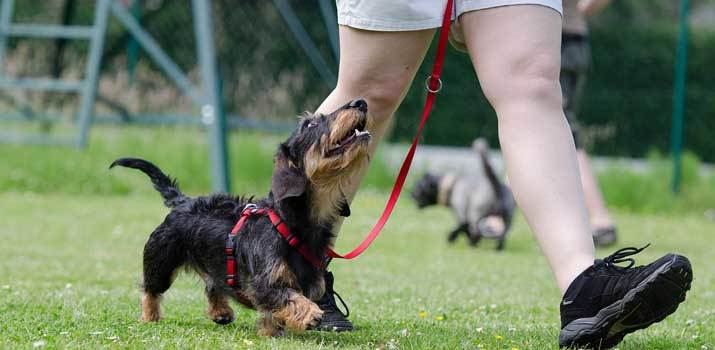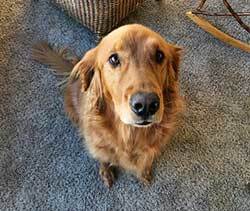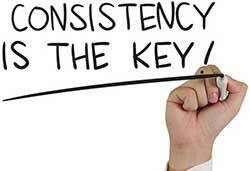
Training is a crucial part of raising a well-behaved dog. While many people think that the training process stops once dogs start to get the hang of things, it should continue throughout your pup's life.
You have to stay on top of your dog's behavior if you want them to stick to your rules.
Discipline plays a big part in keeping your dog in check. No matter how well-trained your dog is, there are going to moments when instincts and curiosity take over.
Mishaps and accidents will happen, so you have to be prepared to deal with them. How you choose to react to those behavioral issues is important.
Training and discipline techniques have evolved quite a bit, especially in recent years.
In the past, dominance and aggression were very common ways that owners disciplined their dogs. However, it's been proven that hitting your dog and employing aggressive punishments will do more harm than good.
A gentler approach is always preferred.
There are several methods that you can use to show your dog when actions and behaviors are not acceptable.
The Problem With Hitting
Hitting and other types of aversive obedience training can prove to be very problematic in the long run.
For the longest time, rolling up a newpaper and spanking dogs was commonplace. However, dog owners are much more empathetic towards their dogs nowadays.
Most trainers don't employ aversive training techniques. This is because it often leads to worse issues than the offending behavior.
You see, most dogs want nothing more than to please you.
They're simple creatures that are pure at heart. When you introduce aggressive actions as a form of punishment, you're instilling all kinds of negative feelings into your dog's head.
Hitting can cause your dog to become scared of you. Instead of connecting the bad behavior with the pain they felt from the punishment, they'll start to connect you with negative emotions.
As humans, we adopt dogs for companionship. Painful punishments will do nothing except break that trust that your dog had in you.
Trust Issue
You're supposed to be their family and protector. Instead of addressing the issue, you're essentially conditioning your dog to expect pain from you. That's the last thing you want.
Also, hitting your dog can cause them to become anxious and confused. This is especially true if you can't make that connection with the negative behavior.
Say, for example, that you come home to find that your dog chewed up your favorite pair of shoes. So, you hit them as punishment.
Chances are, that chewing happened hours ago. In your dog's eyes, you're hitting them for no good reason. They'll come to second-guess every action and become scared that everything they do is wrong.
In the worst-case scenario, your dog can start to become aggressive.
This happens a lot when physical punishment has gone on for a long time. At this point, your dog is well past the stage of fearing you.
They've already lost all trust and loyalty in you and now see you as somewhat of a predatory figure. They could start lashing out in your direction or take their aggression out on anything they can get their paws on.
How to Properly Discipline Your Dog
All in all, hitting and aversive punishments should be avoided at all costs. Dogs are far too innocent to be subjected to physical pain from their owners.
Regardless of what type of behavior you're trying to discipline, there are several methods to do so gently.
Positive obedience training has been proven to be much more effective. Plus, it doesn't break the trust or love that your dog has in you. Here are some methods you can try out.
Time-Outs
Putting your dog in time-out is a much gentler alternative to physical punishment. Instead of hitting your dog, simply put them in another room or place them in a designated kennel for a little bit.
This technique works because you're taking away the thing they love.
While you may not realize it, you're giving your dog rewards constantly. Every time you pay attention to them, give them a toy to play with, and even when you let then snuggle up next to you, you're rewarding them.
By putting them in time-out, you're taking away that reward.
Suddenly, your pup doesn't have the thing that they love, so they'll start to create a link between the behavior they did and the time-out they're in.

You don't even have to put them in a special area to do a time-out. Something as simple as taking away their favorite toy or ignoring them for a bit can do the trick.
Just make sure that you do this gently. Also, don't place them in their normal kennel for time-outs. Kennels are supposed to be placed of comfort, so the last thing you want to do is make that space feel negative.
Your best bet would be to have a designated room with a gate.
Redirections
When you catch your dog doing something that they shouldn't be doing, stop them and provide them with a suitable alternative. This can help teach your dog what they should be doing instead of punishing them for what they shouldn't be doing.
For example, if you catch your dog chewing on the side of the couch, you can call their name to grab their attention. Then, you can provide them with a chew toy.
Essentially, you're redirecting their attention to things you want them to be doing.
Dogs love to chew, so it's hard to put a stop to this behavior completely. Instead of trying and failing to do that, why not give them something that they can actually chew on?
Over time, they'll focus on that object instead of items they find around your house.
Positive Reinforcement
Positive reinforcement is very important with discipline. If you're constantly providing your dog with praise for the good things that they do, they'll automatically gravitate towards those behaviors instead of getting into trouble.
It's the foundation of all types of training.
When you're teaching your young puppy to do their business outside, you provide them with treats and praise when they finally do it.
When you're teaching them to sit and shake, you praise them when they do it right.
The technique should be applied to all facets of their life, not just with tricks and housetraining. Every single time you encourage your dog and praise them for doing something right, they're learning what you like.
Remember, dogs are all about pleasing their owners, so positive reinforcement can do a lot to keep bad behavior at bay.
Using Your Voice
Sometimes, a stern talking to is all you need to show your dog that they're being bad. Dogs are smart enough to know when you're speaking in your normal voice and when you're unhappy.
If you catch your dog doing something that they shouldn't, say their name in a loud and stern voice.
It'll stop them from continuing with the unwanted behavior. Plus, it provides a bit of discipline without any real punishment.
Your dog may not understand what you're saying or why your voice sounds different all of a sudden. But, they won't like it and will not want to hear it again.
Timing and Consistency are Key
When you are disciplining your dog, it's important that you pay attention to timing.
Regardless of what method you're employing, it's not going to affect you dog if they're unable to make the connection with a certain action they performed.
Trying to discipline your dog for something that they did several hours ago will be ineffective. Plus, it could just confuse your dog and cause some unwanted anxiety.
To be effective, you have to catch your dog in the act and take action immediately. That way, your dog knows why they are being disciplined and what they should not do again.
Consistency

Another thing to keep in mind is consistency. You can't discpline your dog one day and let things slide the next.
If you're trying to put a stop to a specific type of behavior, it needs to be addressed each and every time it happens. That's the only way that your dog is going to understand what they're doing wrong.
Consistency is also important when it comes to people. If your dog interacts with other people in your family regularly, they need to employ the same techniques for the same behaviors. Again, you need to avoid confusing your dog.
To do that, your obedience training and discipline needs to remain the same throughout your pup's life and with every person they are around.
Conclusion
It's never easy to discipline a dog. However, it's crucial if you want your dog to be the best pup that he or she can be. Providing proper discipline doesn't have to be negative or involve any aggressive behavior.
You just need to stay calm, stick with your training, and employ positive techniques. With any of the methods we listed above, you can modify your pup's behavior without causing a rift in your relationship.
Also read:

